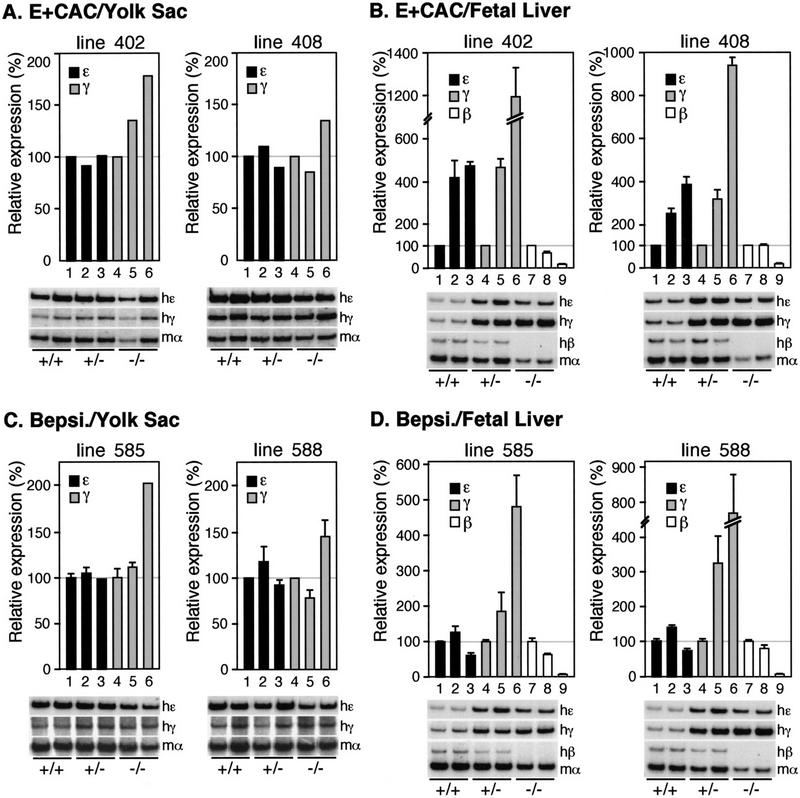Figure 5.
Enhanced activities of the Bepsi, but not E + CAC, promoters require EKLF. Two lines of mutant animals from each construct (E + CAC and Bepsi) were used to analyze the expression of human β-like globin genes in EKLF-null background. Total RNA was prepared and analyzed as described in the legend to Fig. 1. The expression levels of the β-like globin genes in EKLF+/+ background was set at 100. The average and standard deviation (SD) is shown graphically for the genotypic group of more than two animals and only an average is shown for that of two (at least two samples were analyzed for each group). Expression of β-like globin genes in EKLF+/+ (bars 1 and 4); in EKLF+/− (bars 2 and 5), and in EKLF−/− (bars 3 and 6) mice is shown. Representative results of RT–PCR for human ɛ (hɛ), γ (hγ), β (hβ), and mouse α (mα) in different EKLF mutant backgrounds (+/+, +/−, or −/−) are shown below each panel. (A) Embryonic (9.5-dpc) expression of ɛ- and γ-globin genes in the E + CAC transgenic mice. (B) Fetal liver (14.5-dpc) expression of ɛ-, β-, and γ-globin genes in the E + CAC transgenic mice. (C) Embryonic (9.5-dpc) expression of ɛ- and γ-globin genes in the Bepsi transgenic mice. (D) Fetal liver (14.5-dpc) expression of ɛ-, β-, and γ-globin genes in the Bepsi transgenic mice.

